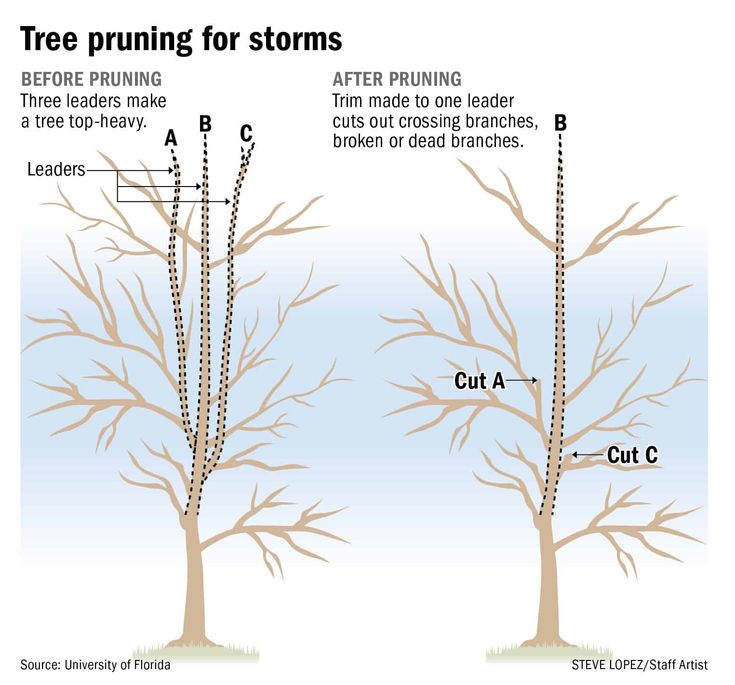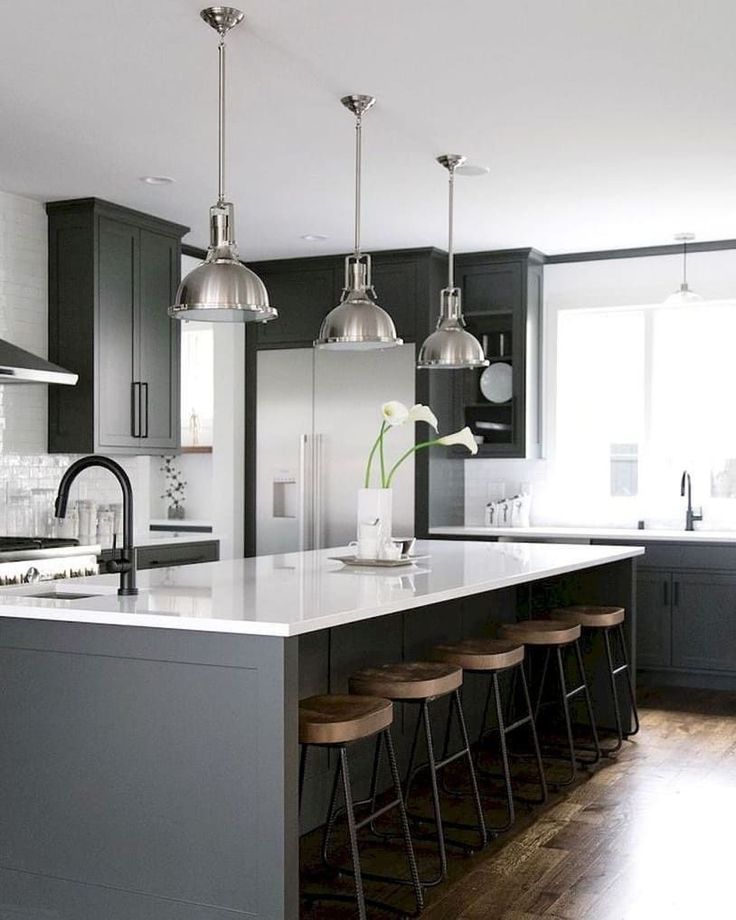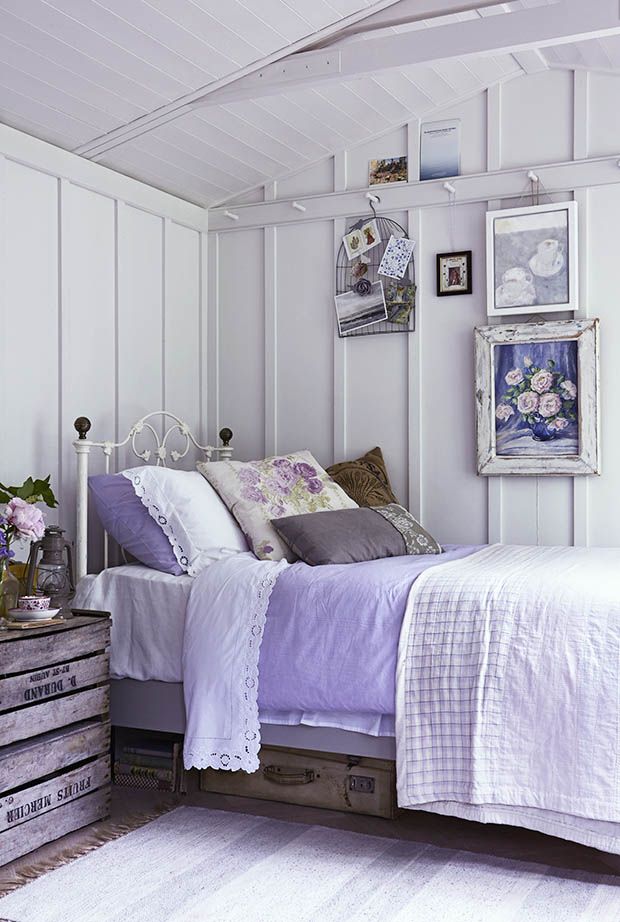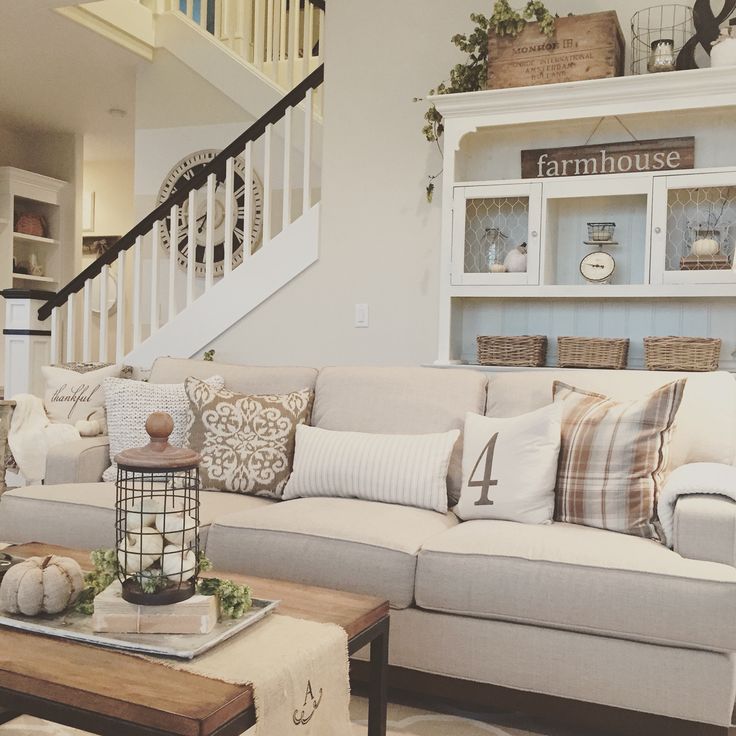How to plant a cottage garden border
How to plant a cottage garden border
(Image credit: Design Libby Russel. Photo Evan Nemeth)
Cottage garden borders are easy to grow, beautiful to look at, useful and often edible – so it's no wonder that they're a popular look. Garden designer Tracy Foster MSGD claims that ‘the resulting symphony of shape, texture, color and scent can bring bucolic charm to any plot, even one in the heart of a city.’
We agree – so read on to find out how to go about creating your perfect cottage garden border, no matter where you are or what size your space is. Our experts have covered plant choices, material considerations as well as other additions to achieve this coveted look.
See: Cottage garden ideas – pretty ways to embrace rustic style outdoors
Choose authentic Victorian plants
(Image credit: Design Ana Mari Bull. Photo: Jim Donahue)
For a truly authentic cottage garden border, there will be a variety of different shapes and forms. Landscape and garden designer Ana Mari Bull MSGD recommends using the past as a guide.
‘Where possible look at modern cultivar equivalents of the plants that would have grown in a Victorian cottage garden,’ she says. ‘Roses are the obvious choice but they must be scented.’
Tracy Foster adds height with hollyhocks, foxgloves and delphiniums. For other flower shapes, try the flat panicles of achillea, ball-shaped inflorescences of globe thistle or cheerful daisy flowers of leucanthemum or rudbeckia.
Ana says, 'The Victorians were also very fond of pelargoniums and would keep pots of brightly coloured flowers as well as those with scented leaves. Probably not to modern tastes, but they were also very fond of the brightly flowered begonias.'
Plant at the correct times of the year
(Image credit: Fi Boyle Garden Design)
Garden landscape designer Fi Boyle MSGD explains that there are two key times of year to plant. The first is the early autumn when the soil is still warm and not waterlogged. For Fi, the advantage of planting in the autumn is that the plants settle into warm earth and start to establish their roots before the winter months. This means that when spring comes they are ready to get going.
For Fi, the advantage of planting in the autumn is that the plants settle into warm earth and start to establish their roots before the winter months. This means that when spring comes they are ready to get going.
However, if you have missed the autumn window, you can also plant in spring. Bear in mind that you may need to keep a bit more of an eye on your plants at this time of year as in recent years we have had some very dry springs.
Think: right plant, right place
(Image credit: Rosemary Coldstream Garden Design)
‘Always think right plant, right place,’ says garden designer Rosemary Coldstream . Your plants have the best start possible when in their ideal soil and sun conditions, so bear this in mind when selecting plants.
From there, Rosemary recommends deadheading regularly to prolong flowering. If your border is either heavy or very dry, mulch it with a good quality compost. When perennials get too big, lift and divide them to grow your plant collection and prevent overcrowding.
Plan your border for the size of your space
(Image credit: Design by Ana Marie Bull photo by Jim Donahue)
Ana Mari Bull told us, 'Cottage style planting can be achieved in both a small and large garden, though personally I think it works best on a smaller scale as it is visually a very "busy" garden, so if I were planning a cottage garden on a larger plot, I would be looking to break up the space by introducing structural elements or creating a garden within a garden or a outdoor room. I would divide a border by either introducing a hedge or a structure on which to attach climbers to create a visual barrier.'
See: Cottage patio ideas – create a pretty spot for relaxing and entertaining
Prepare the soil for optimum growth
(Image credit: Tracy Foster Garden Design)
Garden designer Tracy Foster suggests 'preparing the bed well before planting is a key to success.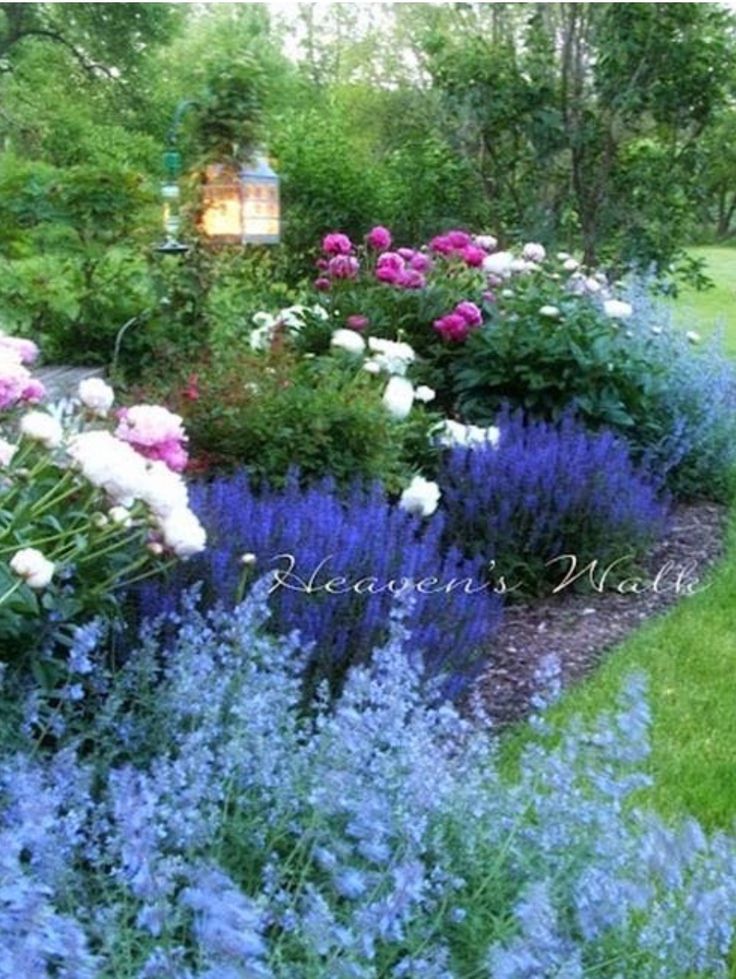 I recommend that you remove everything you can, weeds and plants alike and dig the border over adding in well composted organic matter as you go. You can then replant the things you would like to keep once the preparation is done.
I recommend that you remove everything you can, weeds and plants alike and dig the border over adding in well composted organic matter as you go. You can then replant the things you would like to keep once the preparation is done.
'Once stocked with closely packed plants, the lack of bare soil will help to keep weeds at bay, but you may need to thin out overgrown clumps from time to time and remove any self sown seedlings that pop up in places where they aren’t wanted.'
Choose plants for height
(Image credit: Design Libby Russel. Photos Eva Nemeth)
Libby Russel of Mazzullo + Russell Landscape Design has brought a quintessentially English look to this Somerset space with grand borders packed with herbaceous plants.
Ana Mari Bull shares her plant choices which will give you those tall spires depicted in so many of the romantic, Victorian painting of cottage gardens.
'X Alcalthaea suffrutescens 'Parkfrieden’ and X Alcalthaea suffrutescens 'Parkallee' are a hollyhock and mallow cross which have better rust resistance than the traditional hollyhocks, they also flower for longer periods.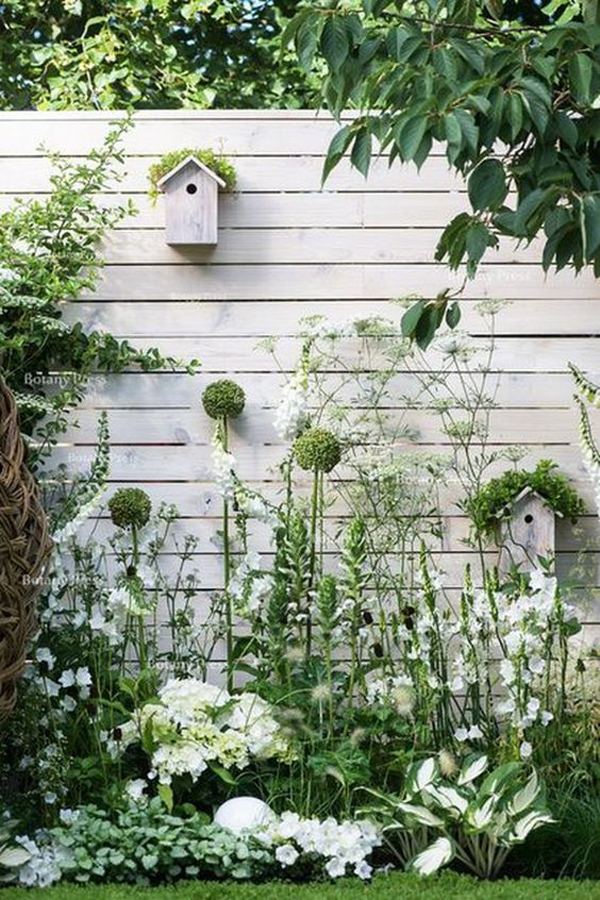 '
'
For delphiniums she suggests 'delphinium Blue Lace, which gives a great show of color and if you cut the flower stalks down after the flowers have gone over, you may get another flush. The white delphinium Galahad can be treated in the same way and adds a lovely glow to the night garden. If you haven’t got the space for delphiniums, then the more diminutive annual larkspur or consolida will give you a colorful, summer long display.'
(Image credit: Tracy Foster Garden Design)
For Tracy Foster, cottage garden borders suits an informal garden layout. 'Examples that spring to mind are brick edges to simple gravel paths, crazy paving with self seeded herbs and flowers growing in the cracks, herringbone brick paths, and simple stepping stones running through the planting.
See: Cottage decorating ideas – charming ways to get a characterful look
'The look also lends itself well to narrow paths and flowing curves which is great if you would like a change from the prevailing hard lines of recent design trends, and anything that looks hand crafted or home made will fit in well especially if it is made of local material in a regional style.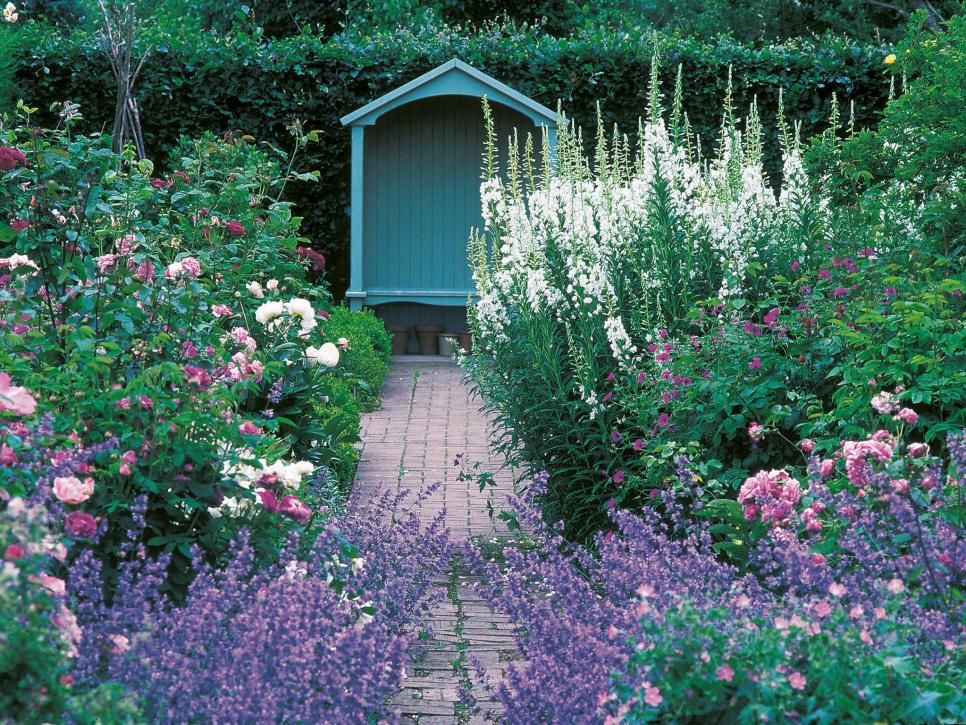 Woven willow obelisks, cleft chestnut fencing, woven willow or hazel hurdles and dry stone or mellow brick walls are suitable choices.'
Woven willow obelisks, cleft chestnut fencing, woven willow or hazel hurdles and dry stone or mellow brick walls are suitable choices.'
Teresa was part of a team that launched Easy Gardens magazine two years ago and edited it for some time. Teresa has been a Gardens Editor at Homes & Gardens, Country Homes & Interiors and Living Etc magazine since 2020 and has developed close working relationships with some of the top garden designers such as Charlotte Rowe, Butter Wakefield, and has been exposed to an array of rich garden content and expertise.
How to plan a cottage garden – from layout to picking plants
(Image credit: Leigh Clapp)
There is an art in knowing how to plan a cottage garden so that it looks like the profusion of colorful flowers has been planted casually – even a little haphazardly. But it's not hard to achieve.
This quintessential and nostalgic English garden style that we associate with pretty thatched cottages can, in fact, suit any type of property. Romantic, pretty and effervescent, cottage garden design is adaptable for the country, town or city garden.
Romantic, pretty and effervescent, cottage garden design is adaptable for the country, town or city garden.
This traditional style has remained popular and has become a mix of modern plants and old-fashioned favorites.
See: Cottage garden ideas - inspiration for plants, layouts and more
What is a cottage style garden?
(Image credit: Leigh Clapp)
A cottage garden design is ideal for the self-confessed plantaholic as it is all about making sure every piece of ground is covered in an apparently unstructured design.
Forget carefully manicured herbaceous borders with strict color schemes. How to plan a cottage garden is all about an informal mix of closely planted flowers across the color spectrum.
Traditionally a practical garden, supplying food and medicine around a farm laborer’s cottage, the style has evolved and is known and copied across the world. The romanticised idea of a country idyll, cottage garden design has became more decorative, containing both ornamentals and edibles, and with a focus on bio-diversity.
At Monty Don's Longmeadow garden in Herefordshire, the cottage garden is 'a traditional, but essentially floral, cottage garden, filled with blowsy, soft colors but also containing fruit trees, rhubarb, gooseberries and some herbs all mingled in together,' he explains.
(Image credit: Leigh Clapp)
The feel of a cottage garden is relaxed, informal and fun. There are no strict guidelines or set rules to follow. Weathered, rustic materials, vintage detailing, heirloom plants and an apparently chaotic look define the cottage garden style – a kaleidoscope of hues and textures from the tangle of flowers and foliage.
But, as with any garden, thought needs to go into planning a cottage garden layout and planting.
See: Cottage backyard ideas – more ways to create yours
How to plan a cottage garden
(Image credit: Leigh Clapp)
When thinking about how to plan a cottage garden, the key is to keep the layout simple, as the infill will be full and busy.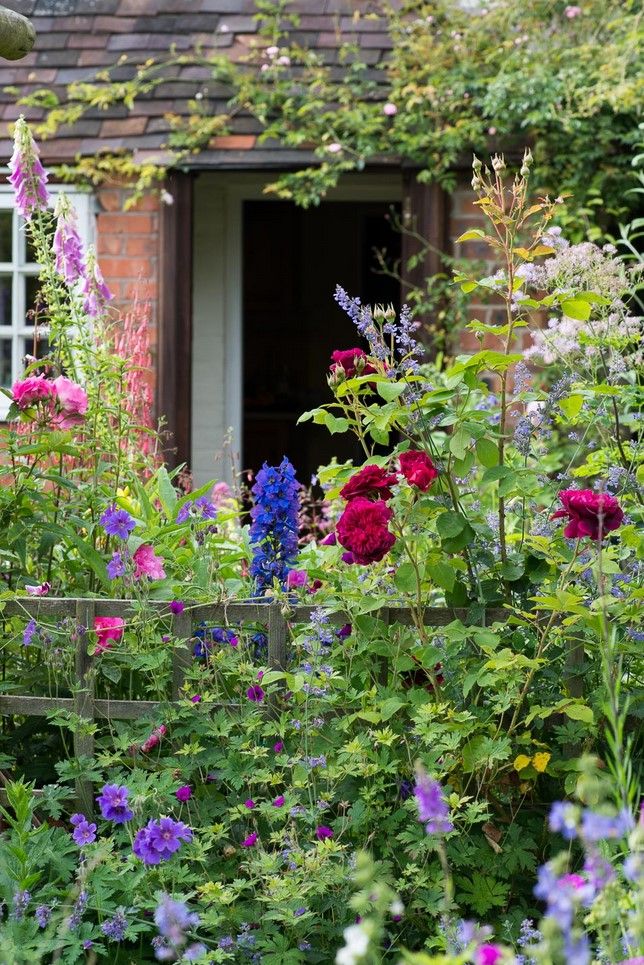
(Image credit: Alamy)
Cottage gardens need planning and regular care, so to avoid it from being too labor intensive, start small, by planning a cottage garden area or border, and then increase the size once your confidence grows.
See: How to plant a cottage border – a beginner's guide.
You could position this cottage garden design behind a picket fence, enclosed by low hedging, or as a pretty scheme to greet visitors to your front door.
2. Think about paths and walkways
Meandering garden paths made of stone, old bricks, gravel or grass offer a visual relief to the exuberance of the planting in a larger cottage garden design.
‘A cottage garden should ideally have winding paths, which in midsummer are only just visible between beds bursting with plants. These paths lead your eye to a focal point; this could be your house, an arbour or even a simple bench,’ recommends RHS horticulturalist Catherine Fairhall Lewis, who looks after the cottage garden at RHS Hyde Hall .
Softly curving pathways that blend in are at home in the cottage garden design.
See: Front yard cottage garden ideas – for plenty of inspiration
3. Add pretty garden accessories to draw the eye
Ornaments, such as a rustic birdbath, sundial or seat, add focus among all the flowers, helping to break up the intensity of the planting and provide a place to rest the eye.
Upcycling, recycling and vintage finds fit the cottage garden design. For instance, an old wheelbarrow billowing with flowers; moss-covered statuary; stone finials half-buried in plantings; tools made into sculptures, or planted rustic troughs. This is an opportunity to express your own personal taste, so feel free to do what appeals to you. There are no rules.
4. Create height to accentuate the vertical
(Image credit: Leigh Clapp)
Add height with a romantic arbor, arches, pergolas or obelisks draped in scented climbing plants, such as roses, honeysuckle or jasmine. But use these features sparingly so the whole effect doesn’t become too hectic.
But use these features sparingly so the whole effect doesn’t become too hectic.
5. Test the soil
Test your soil so you know which plants are best-suited to it and add organic matter, such as compost. Good, rich organic soil where plants will thrive without too much watering or feeding will make the job easier, while mulching also helps retain moisture and keeps weeds down.
6. Choose natural planting
(Image credit: Leigh Clapp)
There are plant choices for sun and shade, as well as different soil types, although most cottage garden plants will enjoy a sunnier spot.
Your aim is for the plants to appear to have planted themselves. ‘Plan the position of your big permanent plants, so your trees, roses and shrubs, first. Smaller flowering perennials will be fitted in the spaces around these, then finally your annuals are used to fill any remaining gaps,’ says horticulturalist Catherine Fairhall Lewis.
7. Cover the ground
There is no social-distancing in a cottage garden design – instead it’s all about informal crowding, packing in as many plants and flowers as possible.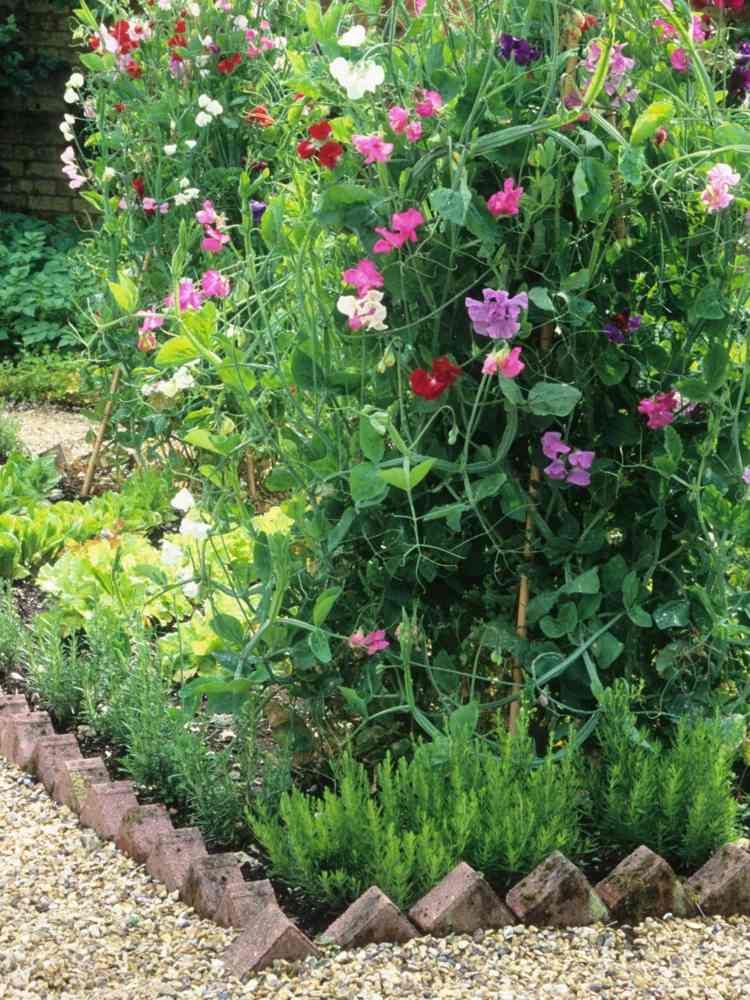 Use high performance, tough plants – such as un-hybridized flowers that appeal to pollinators. Plan for a succession of blooms to maintain the effect of dense planting all year long.
Use high performance, tough plants – such as un-hybridized flowers that appeal to pollinators. Plan for a succession of blooms to maintain the effect of dense planting all year long.
8. Choose colors with confidence
(Image credit: Leigh Clapp)
Select your color palette that appeals to you and works with the architecture of your home – from soft and pastel, dreamy and romantic, to vibrant and clashing.
Planning planting in a cottage garden
(Image credit: Leigh Clapp)
When planning a cottage garden, remember that flowers and scents combine in happy abundance.
‘This is the beautiful chocolate box image everyone has of hollyhocks, roses and color in a varied tapestry of planting that is very irregular. The use of old fashioned annuals and even the odd vegetable dotted in as well,’ says Rosy Hardy of Hardy’s Cottage Garden Plants .
The mantra right plant, right place is important in designing a cottage garden. You are working with, not against your conditions, for the healthiest, sturdiest results, with the minimum of effort.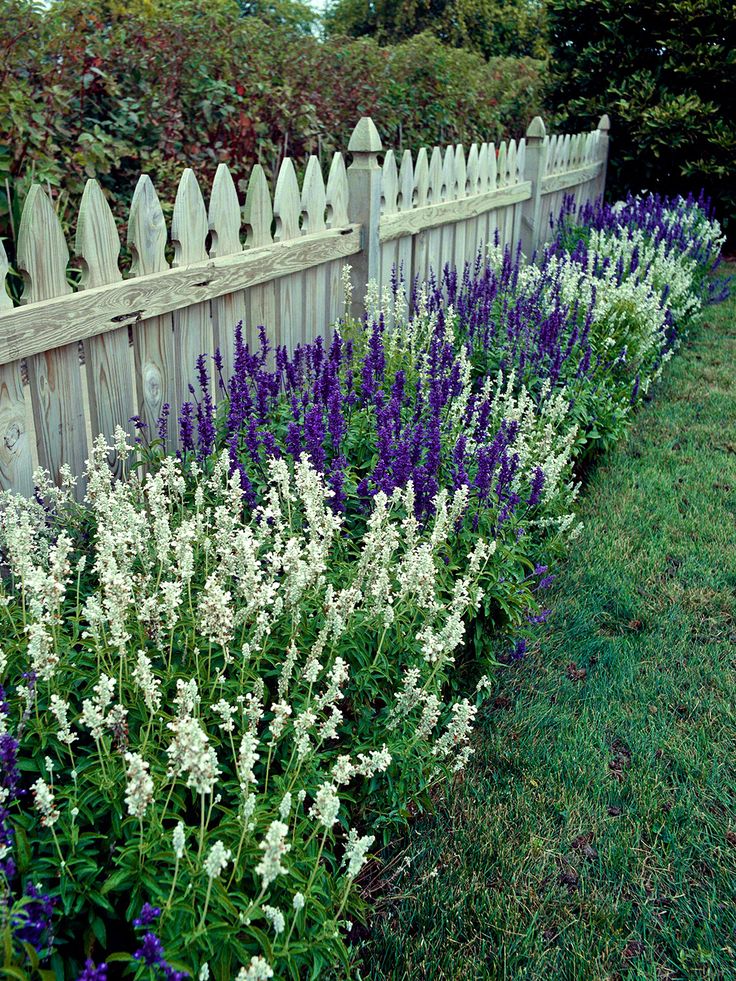
‘When choosing your planting scheme, make sure to include classic cottage garden plants. Be bold with your colors, encourage self-seeding and pack plants closely together so there is no bare earth,’ says Catherine Fairhall Lewis.
See: Cottage garden plants – for the top flowers and shrubs to grow
Easy-going and easy-care are what you are after when planning a cottage garden, with a mix of tough, reliable perennials and annuals, shrubs for structure, and some bulbs.
(Image credit: Leigh Clapp)
- The top five cottage garden plants recommended by the Royal Horticultural Society for ‘voluptuous planting and haphazard self-seeding’ are foxgloves, lavender, delphiniums, scented philadelphus and roses.
- Add to your palette others that also epitomize the cottage garden look, such as nepeta, hollyhocks, phlox, hardy geraniums, love-in-a-mist, stocks, dianthus, cosmos, peonies, sweet peas, aquilegia, daisies of all kinds and wildflowers.
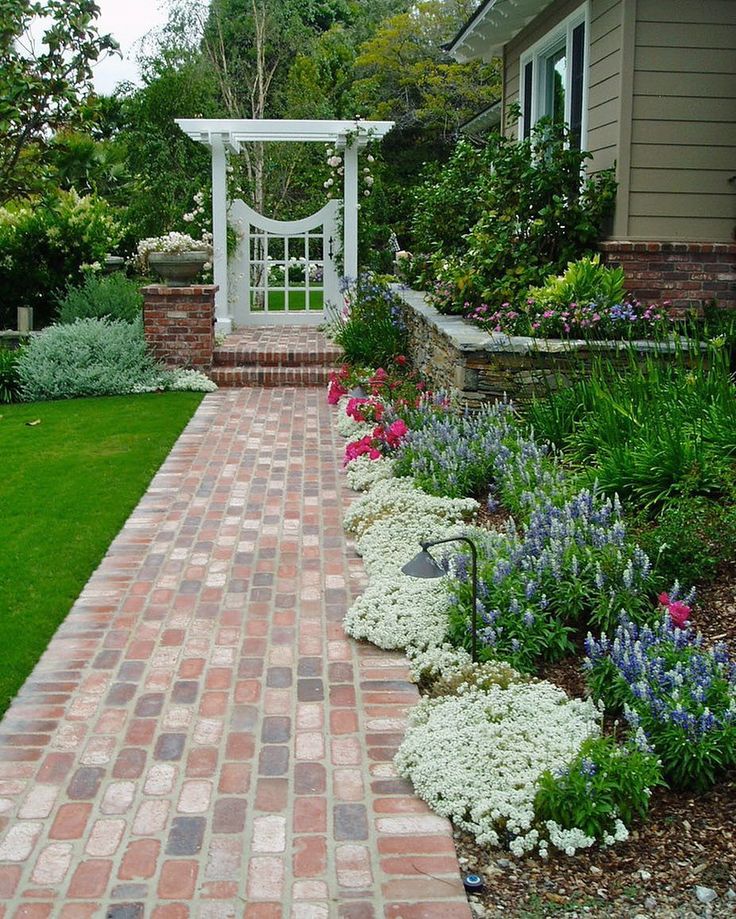
- Select disease-resistant shrub roses and ramblers when planning a cottage garden.
- Don’t forget foliage from choices such as Stachys byzantina, Alchemilla mollis and ornamental grasses
- Add some productive plants among the profusion in a cottage garden design, such as a self-fertile dwarf fruit tree, vegetables and herbs.
‘Include plants that flower repeatedly, really earning their place when space is limited,’ suggests Rosy Hardy.
Examples that Rosy recommends in cottage garden planning include:
- 'Geranium ‘Rozanne’, as it flowers from June to October;
- Nepeta grandiflora ‘Summer Magic’, which can be grown as edging or as a substitute for a lavender hedge in soils where lavender does not thrive,' she explains.
- 'Geum ‘Totally Tangerine’ whose soft tangerine flowers dance on fuzzy stems and is one of the longest flowering perennials at the nursery;
- Anemone ‘Frilly Knickers’ – a very delicate ruffled semi-double.

(Image credit: Leigh Clapp)
How do I create a cottage garden on a budget?
The cottage garden design is an economical style as a lot of the flowers can be grown from seed, such as inexpensive annuals. You can seed swap with friends and neighbors and also take cuttings to grow on in your own garden.
Allow self-seeders to spread, and if something pops up in the wrong spot, dig it up and move it. As this is a natural planting style, everything can have its place.
See: Cottage patio ideas – create a pretty spot for relaxing and entertaining
Use reclaimed and natural materials for hard landscaping, helping to contribute to this being one of the most affordable styles, and upcycle or recycle items for your garden features.
Careful maintenance will also keep the floral show going, so trim and tidy new growth, and deadhead flowers to keep them blooming.
There is both a sense of nostalgia and of freedom with a cottage garden design, which is quite irresistible.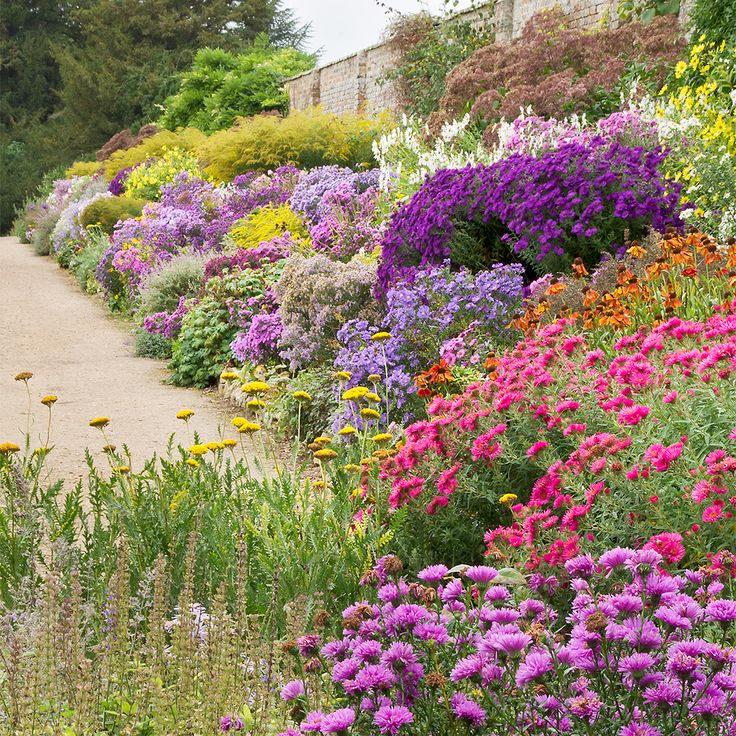 And as there are no rules, plan a cottage garden to perfectly suit your taste.
And as there are no rules, plan a cottage garden to perfectly suit your taste.
Leigh Clapp is a professional photographer with over 25 years experience, primarily as a garden specialist photojournalist but also with food and travel. She delights in exploring gardens, discovering the tiny elements to their overall essence and meeting lots of enthusiastic gardeners along the way. Leigh’s work appears in magazines, newspapers and books, both in the UK and abroad, including Period Living, Country Life, and Gardens Illustrated; as well as being sole photographer for a number of books, including Garden Details, Feng Shui in the Garden, Vertical Gardens and From the Garden – fresh seasonal cooking.
Borders for flower beds - 65 ideas for giving
I bring to your attention a selection of 65 ideas for decorating borders and fences for your country flower bed. There are a lot of options and you will probably choose the most suitable one for yourself both in style and composition of your flower garden.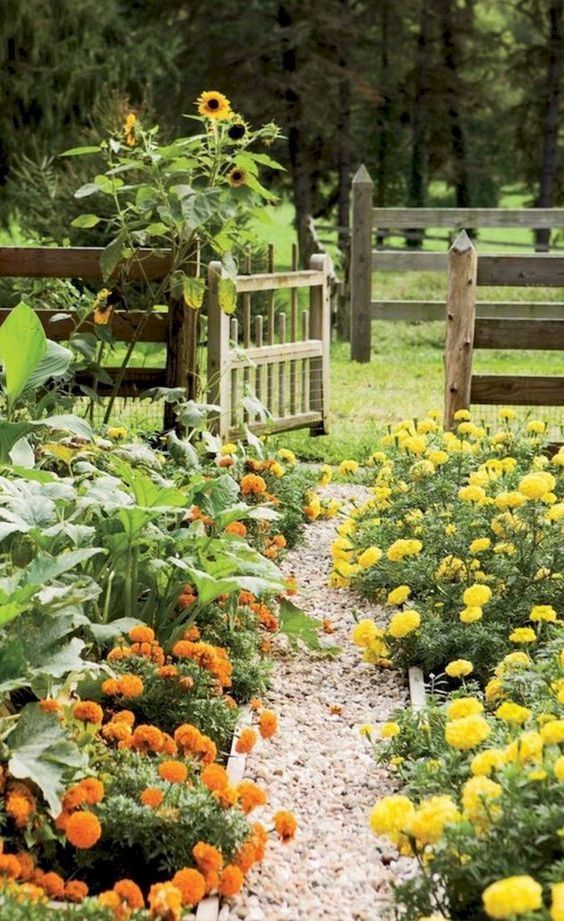
1) Border for a flower bed made of hollow blocks
A very nice solution for a house flower bed, plus the ability to plant flowers in the cavity of the blocks themselves.
2) Paving stones ornament
An interesting and fresh solution is to lay paving stones right on the lawn, you can also visually divide the whole space into sectors. Separate tall grass from cut grass, for example, if part of the lawn is allocated for a flower garden.
3) Budget idea of a plastic border
Modern versions of plastic borders for flower beds sometimes look very presentable. For example, here is such an option under the stone.
4) Tier borders on lawn
The photo shows an interesting option for those who have a small slope on the site. By making a similar transition, you will form an expressive accent on the lawn.
5) Border tape idea
Flexible border tape can also be an excellent solution for those who want to quickly and beautifully equip the borders of their flower bed.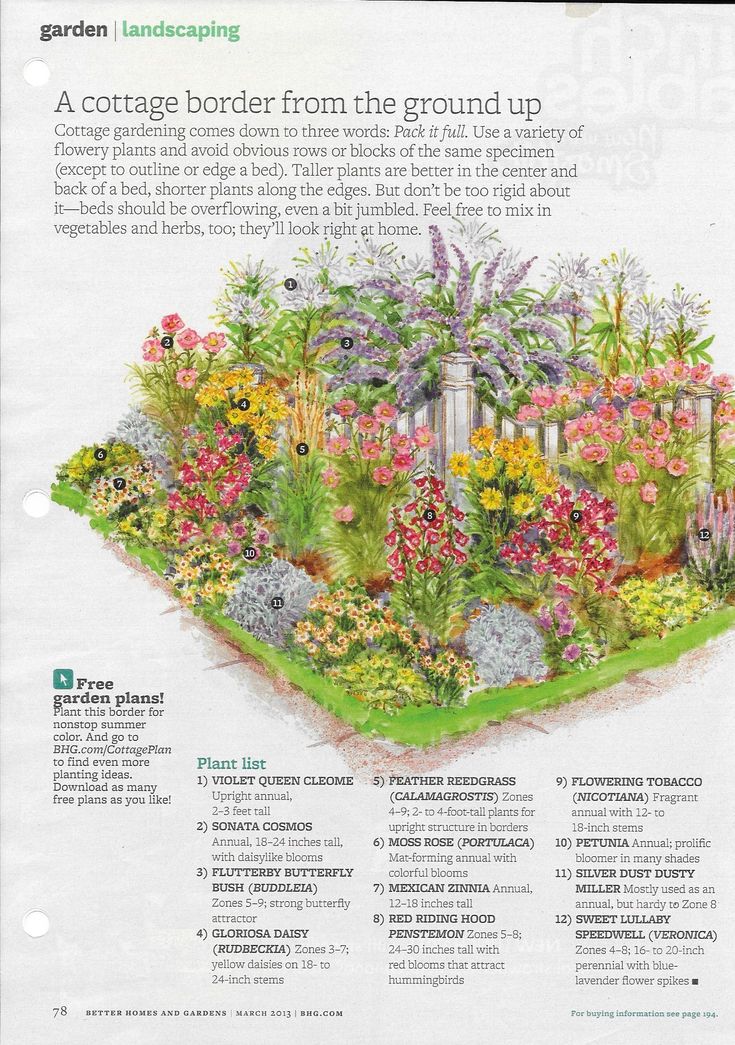
6) Gravel border
A similar gravel border can be used to separate a terrace and a flower bed. The idea is suitable for any country elements. nine0003
7) Pebble borders
If gravel or crushed stone has sharp corners, then pebbles rounded by rivers and seas look somehow kind. If you plant succulents in it, then the space between the flower bed and the lawn will be even more beautiful.
8) Decorative fences
Flower beds with tall plants can be separated by some kind of higher fences, such as wooden fences.
9) Border from tree cuts
A border made of cut trees will also look original, moreover, they can be integrated both horizontally and vertically.
10) Openwork metal fences
Openwork fences are sold in parts and are very easy to insert into the soil. Or mounted on a monolithic base.
11) Wicker Border Idea
If you have the creativity to weave, here's the wicker idea - a natural flower bed border for several seasons.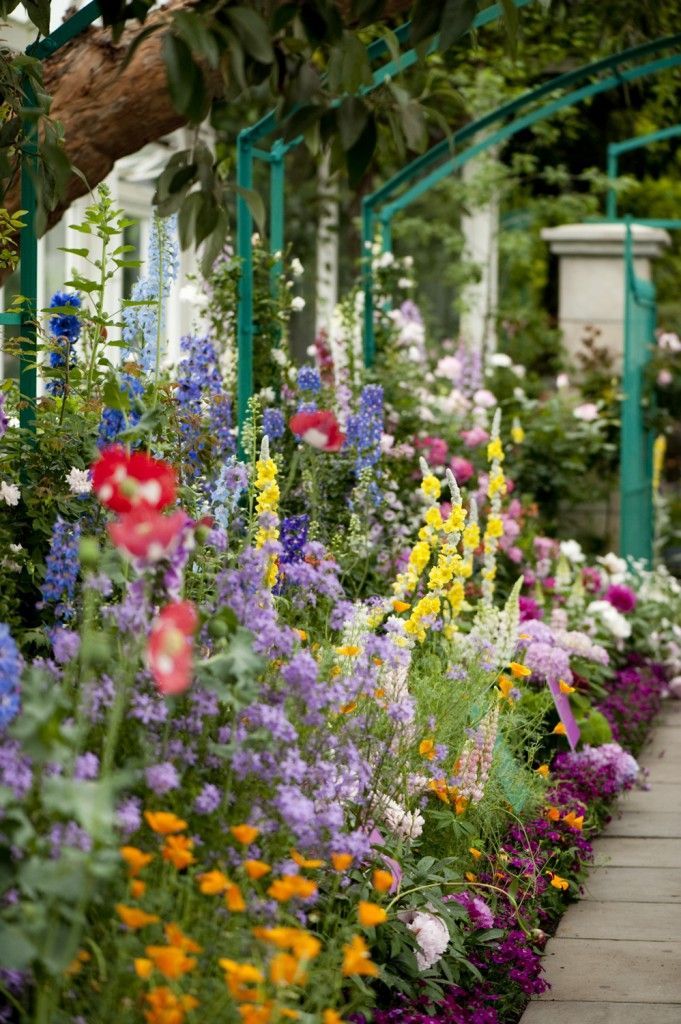 nine0003
nine0003
12) The idea of a pattern in a flower bed
A pattern in a flower bed will visually divide the space between plants and give the flower garden an accentuated color scheme.
13) Bottle borders
The bottles can be used as a border for a flower bed, they can be additionally filled with sand.
14) Illuminated decorative bollards
This is more like a night decoration of the paths, but this installation can also be called a curb. nine0003
15) Grass borders
Ornamental grasses can also serve as a wonderful demarcation between a flower bed and a path or lawn.
16) The idea of a stone border
Similar borders are used in Japanese gardens - these are flat stones set on edge. You can also use pebbles.
17) Log saw cuts
Logs left over from sawing old trees can also be used as a decorative border in your dacha. And for flower beds, and for the visual boundaries of the plots. nine0003
And for flower beds, and for the visual boundaries of the plots. nine0003
18) Raised flower bed
In some cases, a border can serve as a wall for a raised flower bed.
19) Metal pipe fencing
Metal pipe cuttings can also serve as a beautiful decorative element in your dacha, just don't forget to paint them!
20) Border for a flower bed made of tires
Old tires can become a beautiful element of landscape design - in the border of a street flower bed, but here it is important to observe the measure and expediency. In some cases, this aesthetic may not be appropriate. nine0003
21) Fences made of metal compositions
Sometimes you can find very attractive metal structures that can be used as borders.
22) Picket fence
And, of course, you can't help but draw your attention to traditional small wooden picket fences.
23) Borders for flower beds made of timber
In small areas, flower beds can be placed along the fence, around the perimeter, and the border itself can be made from timber.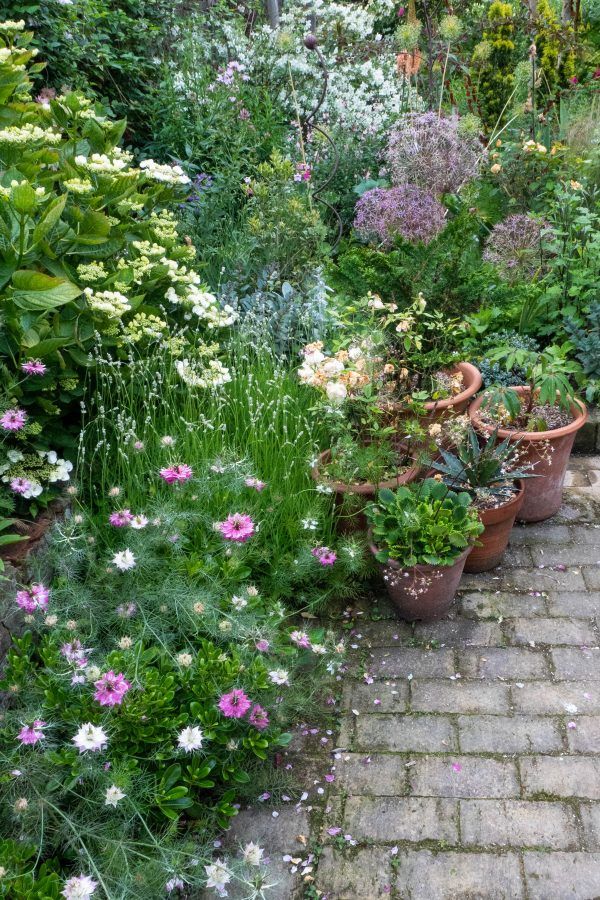 nine0003
nine0003
24) The idea of a gabion border
To be honest, the idea of using gabions seems strange to me. But still, for the sake of completeness, I give this option.
25) Cement edging
I know people who love cement and they are very good at using it in dacha design. Perhaps this idea will work for you too.
26) The idea of a border on the patio
I also met flowerbeds from borders in the yard - this is a solution similar to the one in the photo. Any patio can be additionally decorated with a paving stone border. For contrast, choose a color that is different from the main tone of your relaxation area. nine0003
27) Decorative inserts
Since we are talking about the patio, you can additionally decorate it with small inserts of flower beds along the border.
28) Stone curb
The paths can be separated from the lawn or from the flower bed by laying stone in cement.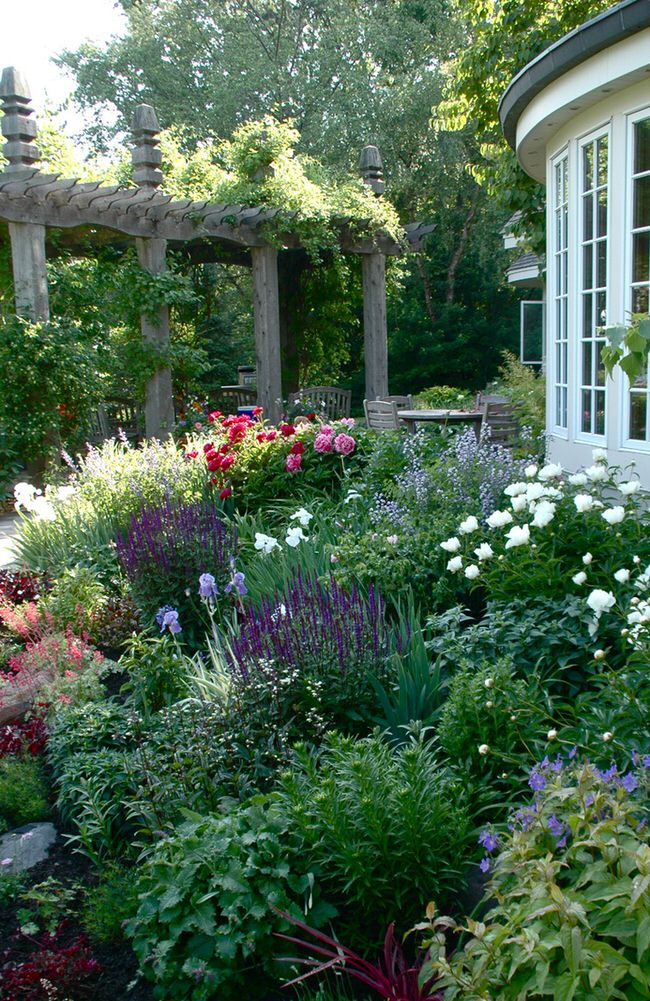
29) Border made of ceramic pots
A fantasy idea, who would use good pots in such a strange way? However, since there is such an idea, I share it with you too. nine0003
30) The idea of a border between a pond and a lawn
A decorative pond in the corner of the plot can be expressively separated from the lawn by a border made of bricks or pavers.
31) Border made of sleepers or timber
Old wooden sleepers or timber can be used as a border for fence beds.
32) Wild Stone Pellet Border
A nice option for bordering large areas is the idea of pellet stones. nine0003
33) Another version of the border with gabions
I think that in this case it would be more beautiful and aesthetically pleasing to plant a stone on the mortar than to use gabions. The grid holding the stones seems superfluous to me.
34) Poles with ropes
The idea of separating a flower bed from a lawn or path can be the same as in the photo.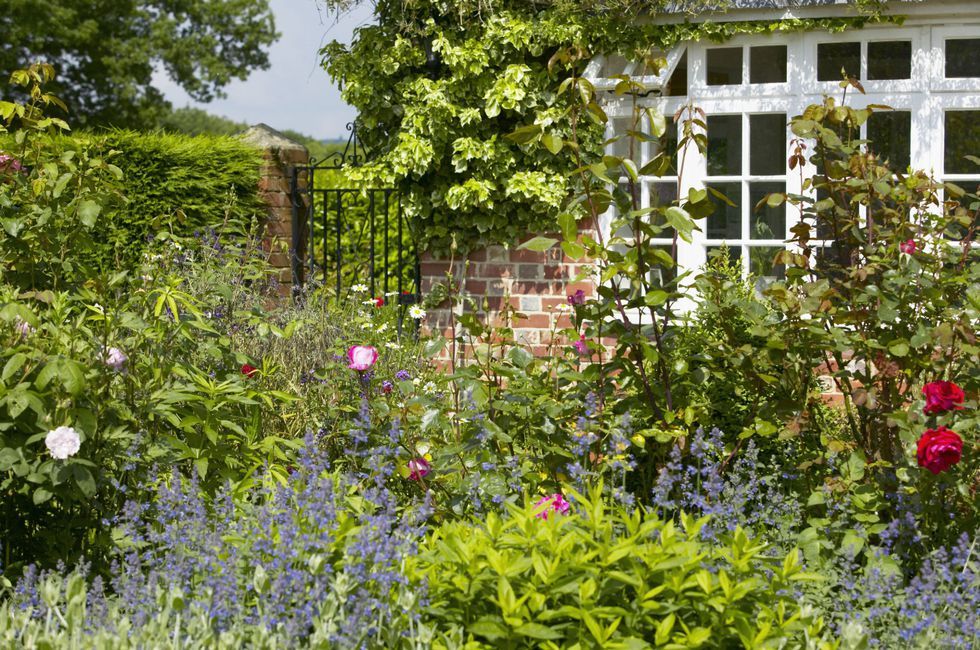 Only the columns should be made lower.
Only the columns should be made lower.
35) Curb with LED strip
A recent idea is to illuminate the path with LED strip by integrating the strip into the curb. nine0003
36) Border of boulders
An original natural border can be a fence of large boulders. The path in this case is appropriate from crushed stone or gravel.
37) The idea of a border with a stream
You can run a small stream along a flower bed or path, the idea can be relevant even if you do not have a source of running water. You can loop the stream with a pump.
38) Shell border idea
If you often go to the sea and bring a lot of shells, which then just lie in bags, then I suggest you use them as decoration on the borders. nine0003
39) Amphitheater Border
If you have a slope on your property, this idea will allow you to lay out flower beds in the form of an amphitheater, using each tier as a separate level.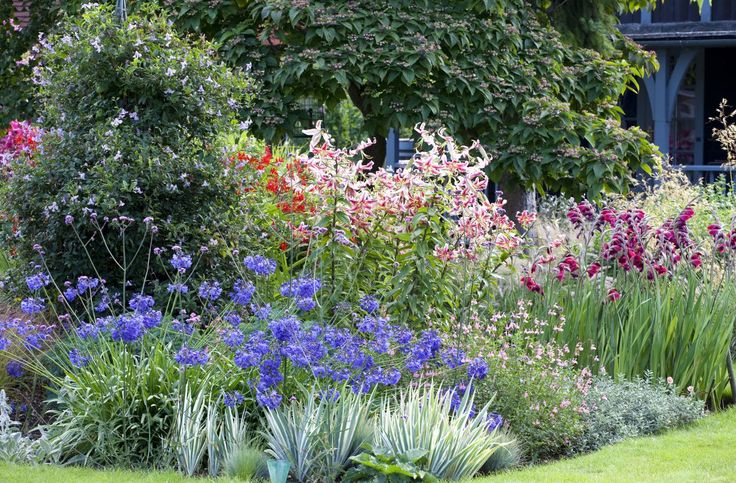
40) Branching a flower bed without a border
However, if you do not want to use any borders at all, then this idea illustrates this possibility. True, you will have to regularly cut the border.
41) Small area border idea
The wooden terrace along the contour is made of white pebbles with tubs of flowers placed on it.
42) Box borders
In some cases, plant boxes can also serve as borders.
43) Stone and tile border
Alternatively, only ceramic tiles can be used.
44) Border between the lawn and the flower bed made of tiles
Cement tape can be used as a base. nine0003
45) The idea of a gravel tree ring
The tree can be separated from the lawn by means of gravel filling in the tree ring.
46) Pebble border
The idea of a pebble border with a pond.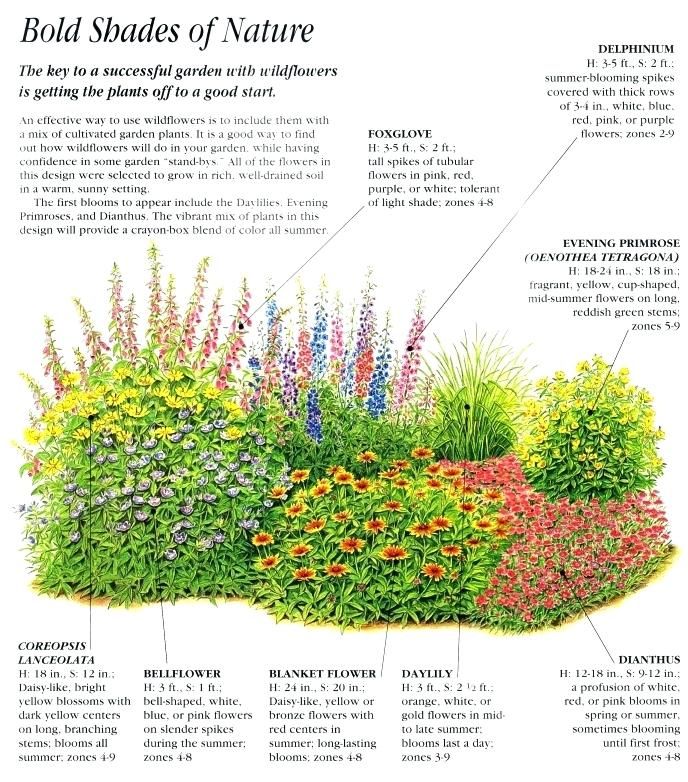
47) A border in the form of a pond
A controversial idea, especially if this "border" will be without lighting ...
48) The idea of a waterfall and a stream
A stream coming out of the waterfall can be let out along the contour of the site. nine0003
49) Stone border between lawn and terrace
Another example of a border between lawn and terrace.
50) Timber and brick border
The combination of their timber and brick is a great idea for a border between a lawn and a flower bed.
51) The idea of a dry stream near the house
52) The idea of a border made of timber along the fence
53) Gabions made of construction waste
I wonder if there are those who want to make such a border for themselves? nine0003
54) Border made of ceramic tubes
55) Border made of various-sized timber
56) Border made of bricks on the edge
.
57) Traditional brick border
58) Classical borders in regular European gardens
59) Wattle border
nine0003
60) Curb made of car tires
Appropriate in front of the house, probably, but not on the site. In this case, the tires must be painted with oil paint so that they do not emit toxic substances.
61) Border of the old plates
62) a border from a living stream flowing in the section
63) The idea of a border with an original weaving 9000
64) a combined brush from a bar and saws 9 9,000
65) Border for a flower bed made of old boards
I recommend either painting the boards in one color or in several colors, alternating them with each other.
66) Border lattice made of branches
I hope that today's selection of ideas for your dacha was to your liking.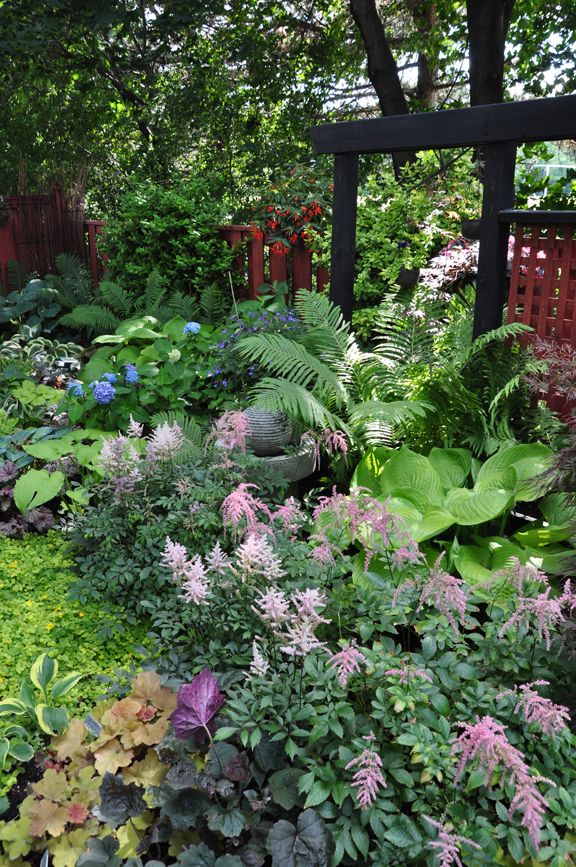 Share border ideas with your friends on social networks, visit my website daily and get a lot of aesthetic pleasure!
Share border ideas with your friends on social networks, visit my website daily and get a lot of aesthetic pleasure!
Luxurious flower beds and borders with a hosta: 60 ideas for decorating a summer house
When is mentioned, hosts are immediately associated with a cozy bench in a shady gazebo on a hot summer day or warm evening.
This unpretentious perennial has two advantages at once in terms of visual aesthetics: large decorative leaves and graceful flowers
Plus, the aroma - very subtle, enveloping and enveloping - sets you up for tenderness and tranquility.
Planting and caring for hostas
If you decide to decorate your garden with a flower bed, or just start growing a border of hostas, you need to decide on the variety and planting site. It should be noted that born in the warm and humid climate of Southeast Asia on the Atlantic coast, the host is demanding on watering and loves shade.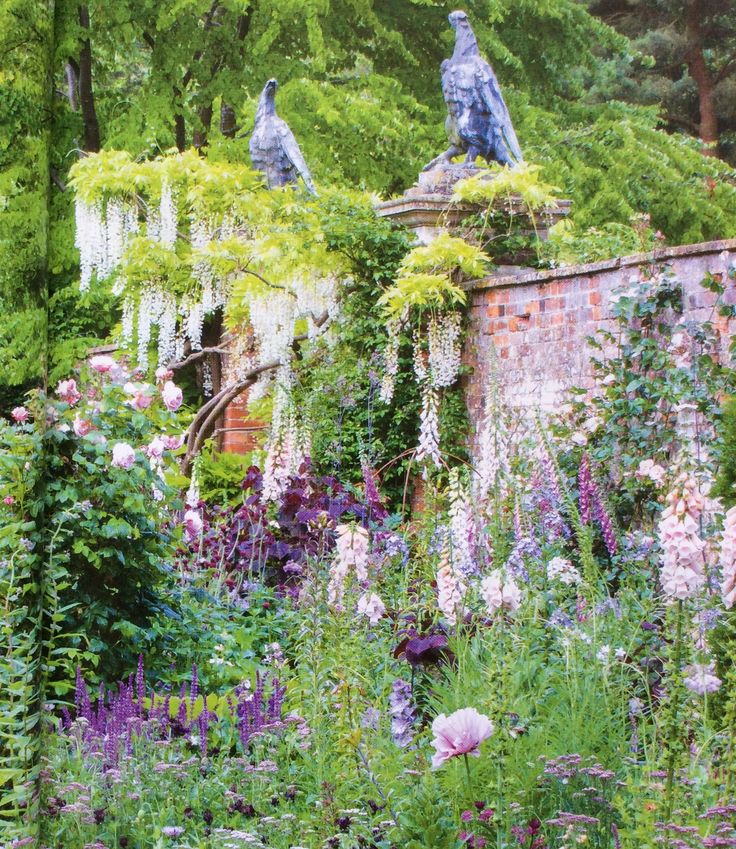
In a well-lit area with light shade, yellow-edged varieties can be planted, as if the light is too bright, sunburn will appear on the emerald leaves of the hosta. But in the darkest corners, under the trees, the perennial feels great, especially for the "blue" varieties. nine0003
To make the plant feel better, it is advisable to mulch the soil around the hosta, this will save the moisture necessary for growth and development.
Hosta blooms in all its glory and fully shows its decorative qualities in 2-3 years
Hosta winters well in our conditions, it is only necessary to make sure that the upper growth point is closed from drying out.
What to grow hosta with
Hosta goes well with primroses (snowdrops, hyacinths), bulbs (tulips, daffodils, etc.), as it wakes up a little later, and the place will not be left empty in early spring. Also, next to the host, ferns, astilbes, volzhanka are good, large host varieties look great in the form of a tapeworm.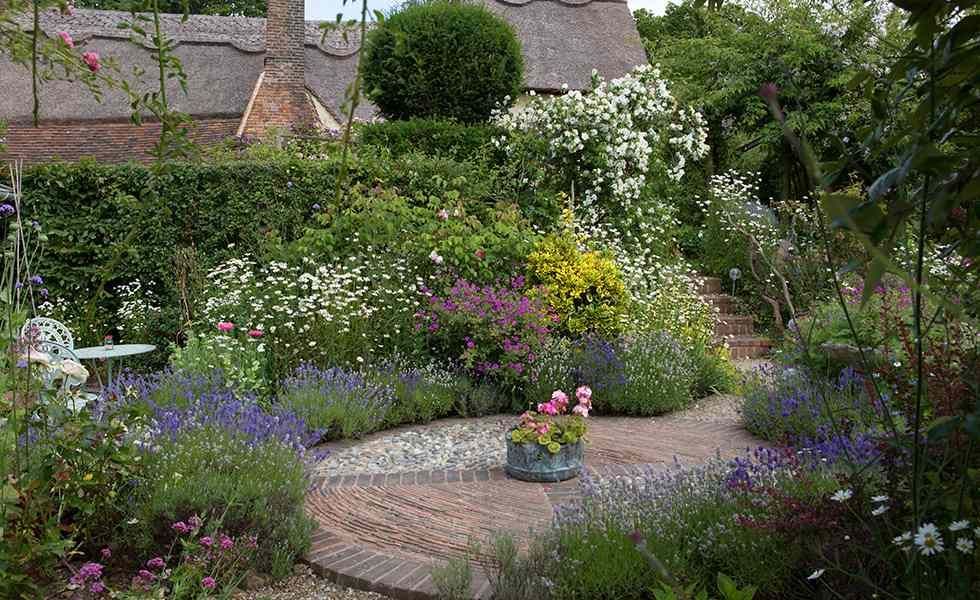 And how cute she can decorate the edges of a small pond in the garden! nine0003
And how cute she can decorate the edges of a small pond in the garden! nine0003
1.
2.
Hosta at their summer cottage3.
About the timing
Spring, summer or autumn?Most flower growers are in favor of transplanting the hosta in early spring, when the plant wakes up, gains strength and is ready to actively grow and develop.
In summer literature they write that the best time for planting and dividing the host:
- Spring: end of April - beginning of May,
- Autumn: late August - early September,
- In the summer: throughout the summer (as one of the books in the Modern Homestead series says, this has been proven by practice).
But the optimal conditions for transplanting are still early spring. At this time, the growth of the roots begins, but the leaves have not yet unfolded.
4.
About dividing
Dividing a bush is the most common way to propagate hostas.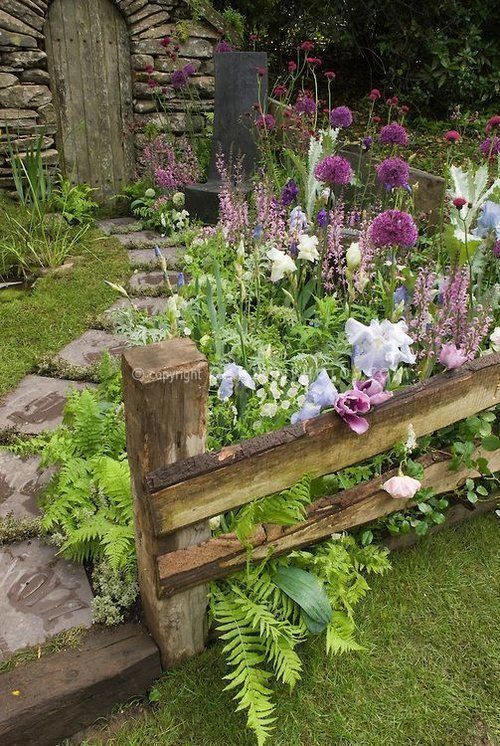 They can still be planted with cuttings and seeds, but when divided, the hosts become decorative faster (after 2-3 years, a beautiful, even bush is formed). From one plant, you can get 15-20 divisions for transplantation. nine0467 Without fail, the host must be transplanted at least once every 5-7 years, otherwise the plant grows strongly, the plantings thicken.
They can still be planted with cuttings and seeds, but when divided, the hosts become decorative faster (after 2-3 years, a beautiful, even bush is formed). From one plant, you can get 15-20 divisions for transplantation. nine0467 Without fail, the host must be transplanted at least once every 5-7 years, otherwise the plant grows strongly, the plantings thicken.
Rooting hosta takes about 4 weeks on average.
For transplantation, the whole plant is dug up and inspected. You need to try to divide the host so that each division has at least 2 buds and a maximum of roots. Start cutting from the center using a clean, sharp knife. The incision site is sprinkled with fungicide, ash or crushed coal and after 30 minutes is lowered into the ground. Before planting, the leaves of the hosta are cut in half. nine0003
5.
5.
About care
- In the spring it is useful to fertilize the host with complex mineral fertilizers, at this time of the year it especially needs nitrogen.
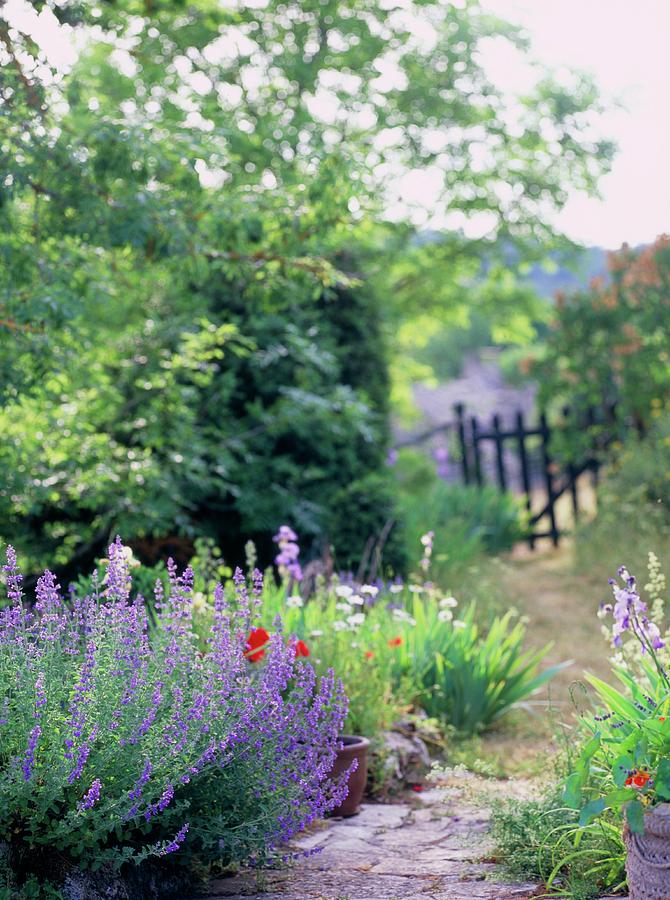 In summer - organic matter (compost and humus). In summer, the plant must receive as many nutrients as possible in order to enter the winter well.
In summer - organic matter (compost and humus). In summer, the plant must receive as many nutrients as possible in order to enter the winter well. - Hosta does not need weeding, practically nothing grows under it. The plant is resistant to diseases, but it is very fond of slugs and snails. They must either be collected by hand or use tobacco dust. nine0448
- For the winter, hosta bushes are covered from frost, and the soil is mulched (already in September, until the leaves have fallen).
- From the beginning of August, feeding is stopped.
- Faded flower stalks are cut off so that the plant does not waste energy on the formation of seeds.
6.
Host in the summer cottage7.
8.
9.
10.
Host at the summer cottage11.
12. 9000. 9000.
13.
14.
hosts at the summer cottage21.
22.
23.
24.

